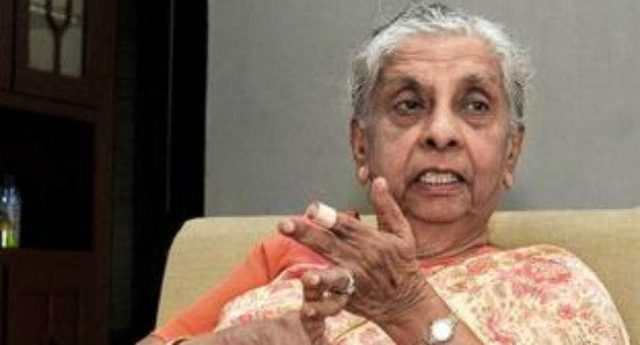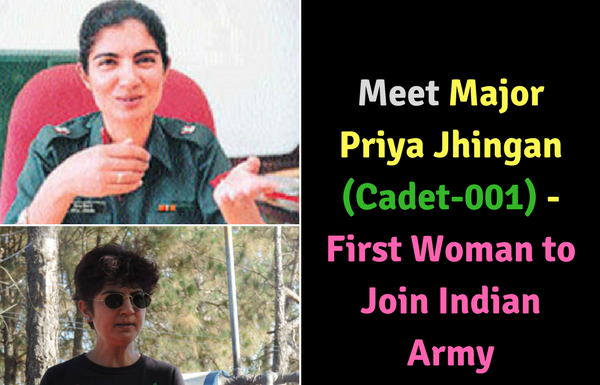Meet Anna Rajam Malhotra, the lady who made history by becoming the first female IAS officer of independent India. Way back in 1951, Anna successfully battled all prejudice against her kind and carved out a new identity and path for herself. Here’s her story-
In 1927, Anna was born to Ottavelil O. A. George and Anna Paul in Niranam, Alleppey. She was brought up in Calicut and her schooling was done in Providence Women’s College. She then went on to graduate from Malabar Christian College in Calicut. Thereon, she completed her Masters in English literature from Madras University in 1949.

To understand her story better, we must take our minds back to 1950s. The scenario was quite different back then. Our society had not progressed as much. India was relatively new, having gained independence just a few years back. The set- up of the society was as patriarchal as it could get. Feminism was not even a concrete concept. To achieve something or be independent was a big deal for women. Anna too, faced a lot of prejudice and restriction. It wasn’t a society that accepted female empowerment so easily. Most institutions were sexist in their approach- which is why there had been no female IAS officer yet!
Anna decided to join the Indian Administrative Services (IAS) post her post- graduation. It was a courageous decision for her. She worked hard towards her dream. Her efforts bore fruit as she cleared the civil services examination in 1950. She was the first woman to do so!
What lay next was an arduous and long- drawn journey with various challenges. When she went for the interview, Anna was discouraged from joining the service by the board that was handling her entry. The board consisted of four civil services officers, and was headed by the chairman of UPSC- R. N. Banerjee. She was told she would be more ‘comfortable’ in the Foreign Service or the Central Services, because they were more suitable for women. Clearly, the board was skeptical about sending a woman for administrative duties. Anna refused to be bogged down by this criticism and chose to stick to her decision. She was eventually allowed to join the IAS. This was her first victory.
She was first posted to Madras, where chief minister C. Rajagopalachari was at the helm of affairs. Reportedly, he was unsure of giving her the charge of a district sub- collector simply because she was a woman. She was instead offered a post in the Secretariat! She did not comply with this prejudice and fought her way to become the sub- collector of Tirupattur in Madras. It was the first time that a woman had been thus posted as a sub- collector in a district.
Anna went on to achieve many laurels during her career. She worked under seven chief ministers. She also worked closely with Rajiv Gandhi in the Asiad Project, and had a brief stint with Indira Gandhi as well. Anna was a woman of many talents- she was skilled in horse- riding and rifle- shooting as well!
Her gender proved to be an issue for others at many instances. Once, when she was posted as a sub- collector in the Hosur district, she visited a village in her area on horseback. She was informed that the village women wished to see her. When they met her, they inspected her silently and one of the old ladies declared that Anna ‘looked just like them’. Anna realized that the ladies were disappointed for they had expected a female sub- collector to look different than they did! They were unable to fathom what made her so different that she got to be an officer of such stature.
In those days, it was difficult for men to be assured that a woman officer was equally capable of handling administrative duties, magisterial powers, lathi charges, and even police firing. Anna had to prove herself to all time and again. She says that it wasn’t really the fault of the men, because seeing a strong and capable woman in power was not something they were used to.
Anna would handle her responsibilities with precision, wit, and endearment. Accolades and compliments came, but gradually. After she had been in the service for a few years, she learnt that C. Rajagopalachari had appreciated her work in an official report. He had also mentioned her specially at a public meeting in Trichanapalli as a perfect example of progressive women.
Her performance was commended even by the (then) UPSC Chairman who felt she had proved why more women should be recruited into the services. Anna reacted by stating how this was not a legitimate reason. She strongly believed that women should be enrolled only on the basis of their caliber and merit, and be given a fair chance to prove their capabilities.
Regarding her personal life, her career proved to be a hindrance again. Anna wished to marry her batch mate and colleague, R. N. Malhotra. However, she was told that if she got married, her service would be in jeopardy. It was officially mentioned on paper! Few years later, the rules changed in her favour, thankfully. She waited for her time.
Anna was posted as India’s Executive Director at the International Monetary Fund in Washington, when she finally got married to her sweetheart. This was surely a power couple, for her husband went on to become the RBI Governor in 1985.
When they returned to India, Malhotra took up his new post. Anna on the other hand, received a special assignment; she was asked to handle a project of building India’s first computerized container port, Nhava Sheva, in Mumbai. She was monumental in bringing success to this prestigious project. To top it all, she was awarded the Padma Bhushan in 1989.
With such an exemplary career in the midst of retracting forces, Anna proved her mettle like no other. She not only shattered the glass ceiling, but showed to the nation how women were never bound by any such ceilings. She never bowed down to anyone, and had an absolutely clean record. Her stellar service inspired many, and shall continue to inspire future women. This iron lady has our love and respect.





























